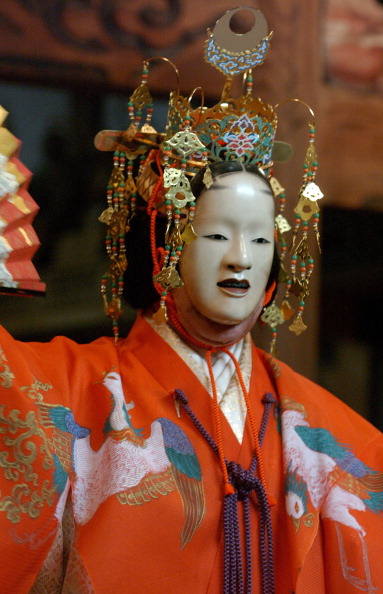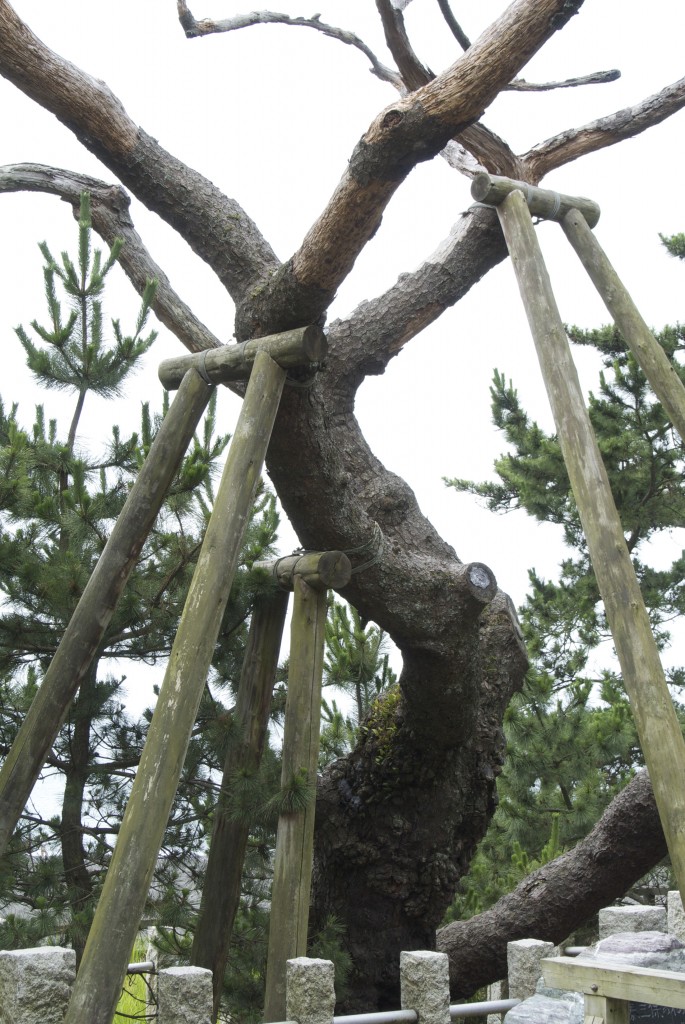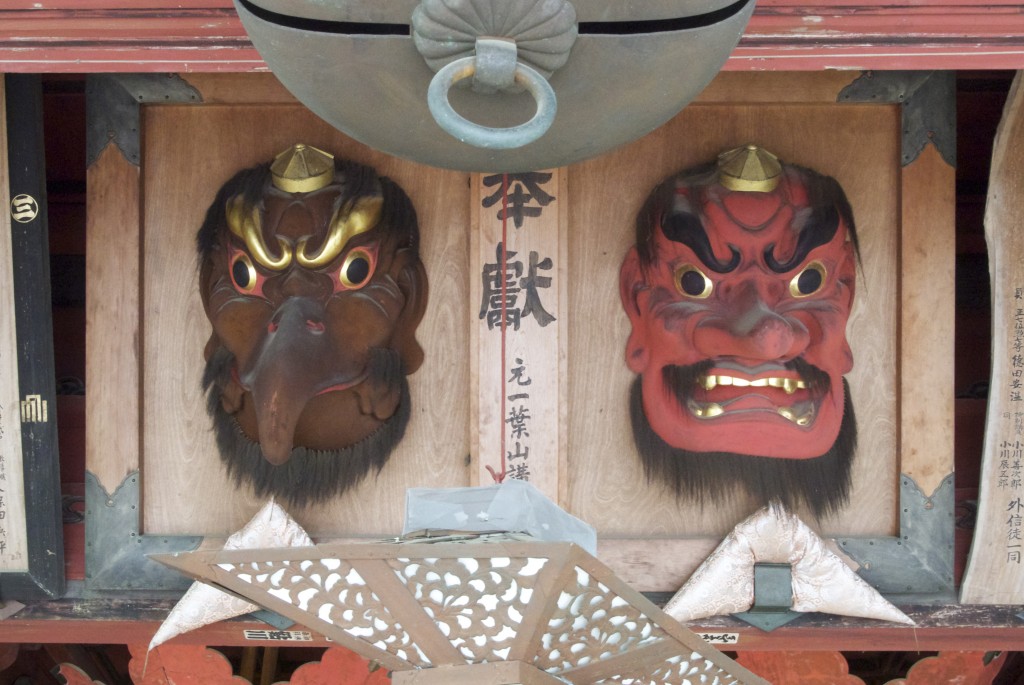
The headdress of the costume in the Noh play Haguromo suggests shamanic connections (photo by Jun Sato/WireImage)
The shamanic connections of early Shinto are often overlooked, but an item in the excellent website on Noh, from which the passage below is taken, suggests how strong a part shamanism played in the formation of Japanese culture. Haguromo is one of the most famous Noh plays and a well-known story to Japanese, concerning a feather robe worn by a celestial maiden. Bird, other worlds and a female speaks strongly of the miko-shamaness of ancient times, for whom the bird-costume would have been a symbol of flight and transcendence, as in other shamanic cultures. (No doubt the tengu in its guise as a bird is a similar relic of shamanic times.)
**************************************************
One spring morning, a fisherman named Hakuryō, sets out to go fishing with his companions and finds a beautiful robe hung on a pine branch at Miho-no-Matsubara.

The pine on the beach at Miho no Matsubara on which according to legend the feather-cloak was hung. Now part of the Fuji World Heritage Site, since the beach offers fine views of Japan's most sacred mountain.
When he attempts to take it home as a family heirloom, a celestial maiden appears and asks him to return the robe to her. At first, Hakuryō refuses to return it. However, he is moved by the celestial maiden, who laments that she cannot go home to heaven without it. He therefore decides to give her the feather robe in return for seeing her perform a celestial dance.
As the celestial maiden in the feather robe performs the dance, which describes the Palace of the Moon, she praises the beauty of Miho-no-Matsubara in spring. She eventually disappears in the haze, beyond the peak of Mount Fuji.
This noh drama is based on the well-known legend of the celestial feather robe. In the folk tale, the celestial maiden is compelled to become the wife of the man who hides her feather robe. However, in this noh drama, the generous fisherman, Hakuryō, soon returns the robe to her.
Hakuryō suspects that if he gives the feather robe back to her, she will fly back to the heaven without performing the dance. But the maiden responds that such doubts belongs to the earth but there is no deceit in the celestial world. Honest Hakuryō is impressed by her words and returns the robe to her.
The dance of the celestial maiden is the pillar of this drama and is called Suruga-mai in Azuma-asobi in later years. Zeami’s book shows that he considered the dance of the celestial maiden as special. In later generations, the celestial dance is recognized as the archetype of dances; however, the form has been dramatically changed since then.
A calm spring sea, white sand beach, lush green pine trees, exquisite dance of a celestial maiden, and Mount Fuji at the horizon. Both the performers and audience are filled with happiness whether performing or watching this noh drama.
***************************************************************************
For a somewhat different folktale version of the Robe of Feathers, see here. This links the robe with the Strange People (a shamanic clan, perhaps) and says that “In the robe were feathers of all the birds that fly, every one; the kingfisher and the golden pheasant, the love bird, the swan, the crow, the cormorant, the dove, the bullfinch, the falcon, the plover, and the heron.”

Two types of tengu: the one on the left has bird-like features and a covering of feathers

Leave a Reply